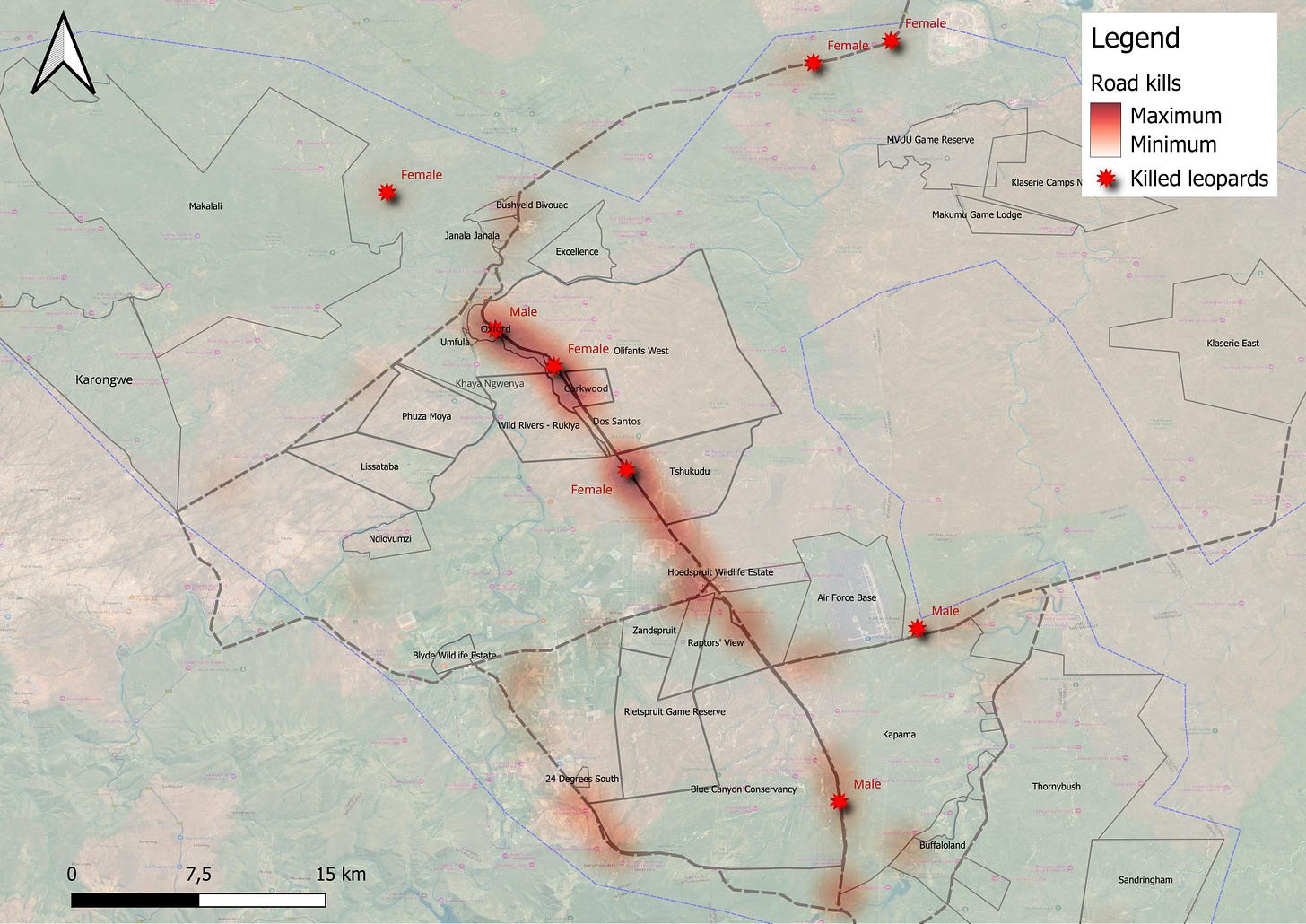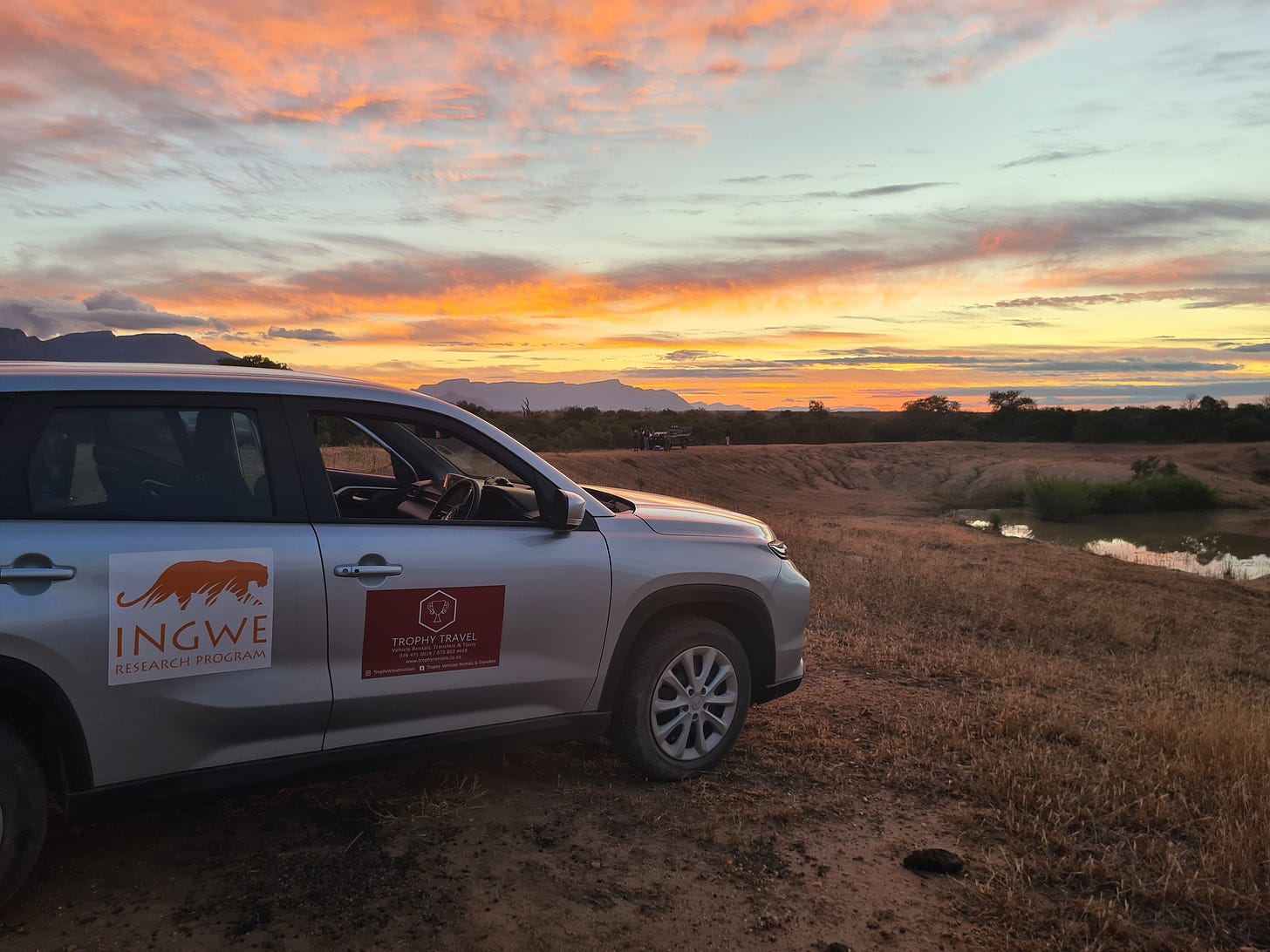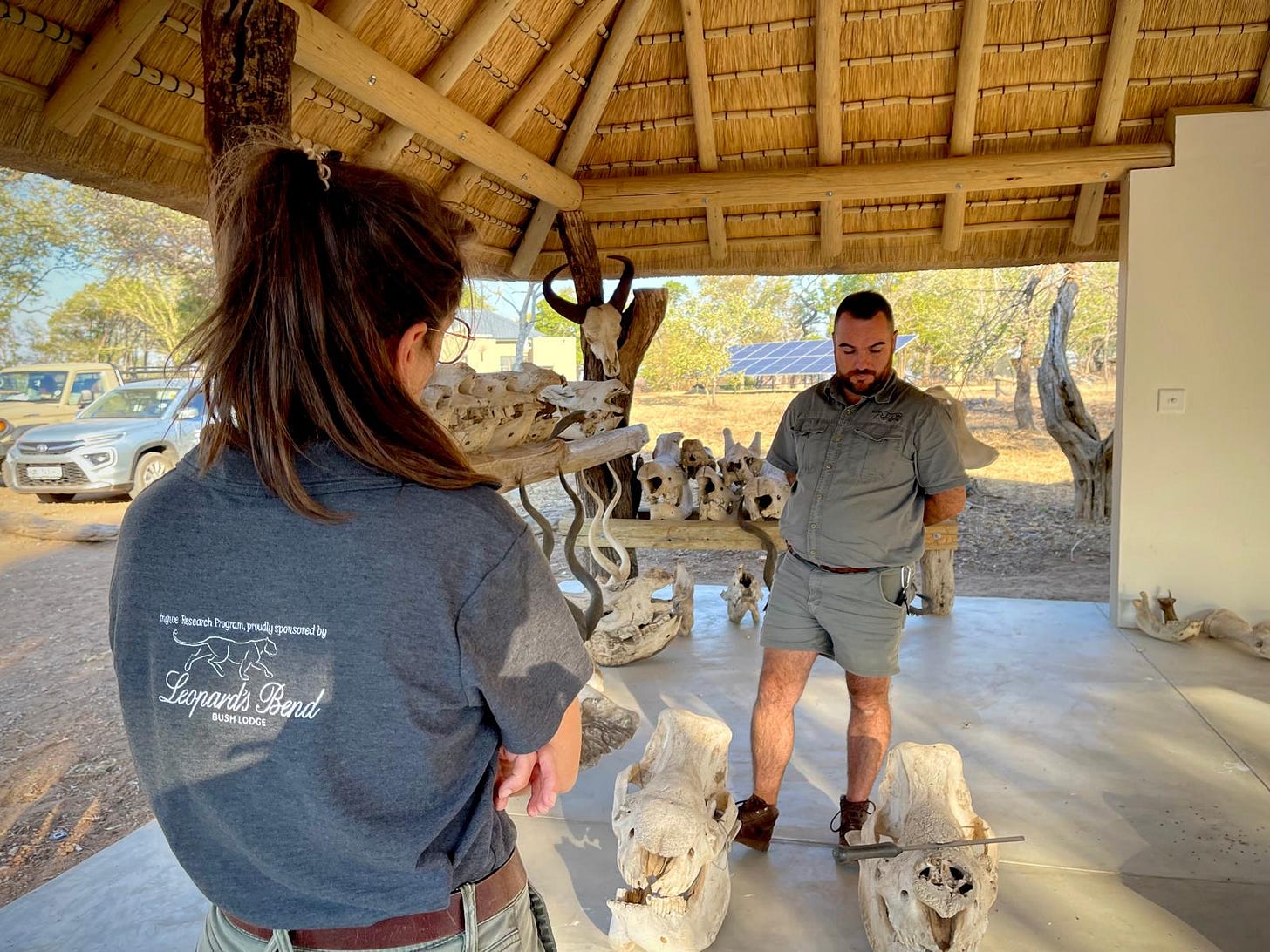Monthly newsletter - June 2025
Fieldwork underway: Advancing road ecology research and community engagement
Dear Supporters of the Ingwe Research Program,
June marked a significant phase for the Ingwe Research Program as our team commenced intensive fieldwork in Hoedspruit. This month's update details the substantial progress on our key road ecology research projects and successful community engagement efforts, all made possible through the crucial backing of our dedicated partners.
Progress on the Road Ecology Project: Camera Trapping
Our road ecology project made substantial progress in June with the initiation of a comprehensive camera trap survey. This survey focuses on monitoring wildlife movement through culverts and underpasses along a 47km section of the R40.
The preparation for this survey involved several critical steps. Our team, in collaboration with the South Africa National Road Agency, meticulously located and assessed all 119 culverts under the R40, a process that took 11 hours of dedicated effort. From these observations, our new intern, Tanis Short (from McGill University, Canada), alongside Christoffel De Lange, Research Assistant at Transfrontier Africa, and our myself, selected specific culverts for the survey and identified variables that could influence wildlife use. We then met with numerous property owners along the first section of the R40 to secure permission for safe camera deployment within their fences, globally receiving broad support and trust. The final preparation involved assembling and testing all 60 camera traps, ensuring optimal settings.
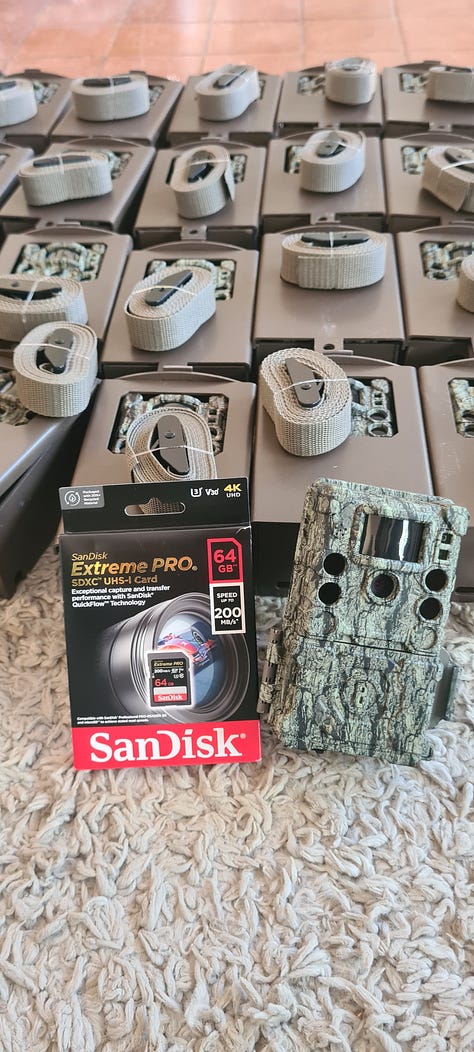


Field deployment for the first section of the road involved 32 hours of work, during which 46 camera traps were successfully set up with the assistance of volunteers from Transfrontier Africa. During deployment, a volunteer observed a leopard tail inside the fences, followed by alarm calls from impalas 20 minutes later. Remarkably, a leopard then utilized an adjacent culvert to safely cross the road. This firsthand observation provided compelling validation for the project's focus. The cameras will remain in this section for 45 days before being moved to the next section at the end of July. Have a glimpse at the footage demonstrating how various species, including leopards, are utilizing these underpasses.

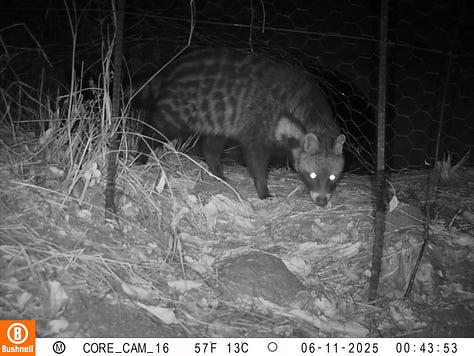


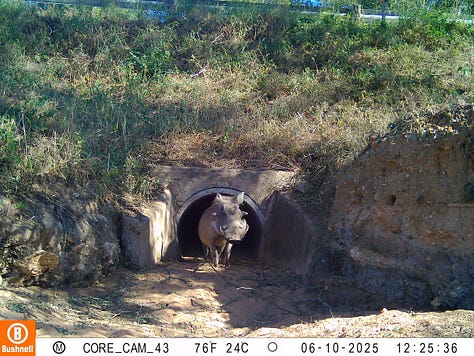
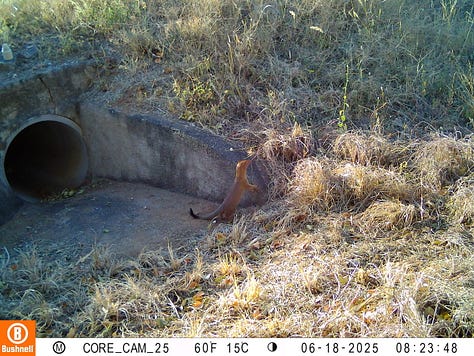
Roadkill Survey: Monitoring Road Impacts on Wildlife
Another integral part of our road ecology project is the roadkill survey, conducted through rigorous morning patrols. For 14 consecutive mornings in June, our team traversed the 47km transect, commencing 1.5 hours after dawn at a controlled speed of 50 km/h. While the slow speed and our sign “roadkill survey in progress” created some road awareness for passing vehicles, the primary objective was precise data collection.
Upon spotting roadkill, we meticulously recorded photographic evidence, identified species (often challenging given the condition), and noted environmental variables such as road topography, fence types, and verges. During this period, we recorded 36 roadkill incidents, with 57% being birds and 43% mammals. Preliminary data suggest potential trends related to road characteristics; however, robust conclusions will require data from all six planned surveys (three in winter, three in summer). Our Research Assistant, Jem, will continue these patrols in July, and I will take over again in August. These surveys will be repeated in the wet season, where an increase in roadkill incidents is unfortunately anticipated.
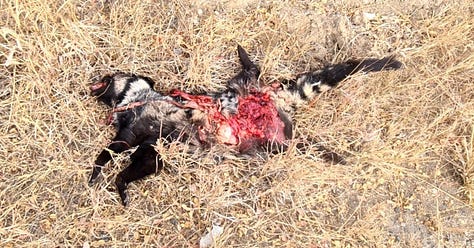

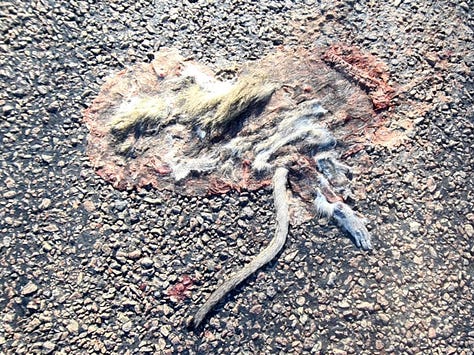
These systematic patrols complement the citizen science data collected via our WhatsApp groups. By combining both datasets, we have developed a hotspot map identifying areas with higher roadkill occurrences. We believe the current data, highlighting species such as civets, genets, African wild cats, jackals, tortoises, and various birds and reptiles, is an underestimation of the actual impact of roads on wildlife in the area, reinforcing the need for continued comprehensive data collection.
Stakeholder Engagement: Exploring Leopard Collaring for Fine-Scale Data
As part of our ongoing road ecology project, we recently hosted a meeting with 20 diverse stakeholders. The discussion centered on the potential for collaring leopards to collect fine-scale data on their road-crossing behavior and identify specific hotspots for conflict mitigation. This meeting prioritized full transparency, allowing us to gather valuable feedback, address concerns, and incorporate ideas from all involved parties as we continue to consider various research approaches and data collection strategies.
Community Engagement: Sharing Insights from Leopard Citizen Science
At the end of June, I had the opportunity to present at a Nature On Tap event hosted at the Padel Court in Hoedspruit. The presentation, titled "What does 2.5 years of citizen science data tell us about the leopard population in Hoedspruit?", drew an impressive audience of over 170 attendees.
The high attendance was heartening, reflecting the community's keen interest in our work and their direct contributions to the program's expansion and leopard monitoring. The talk provided insights into the over 200 individual leopards identified by Ingwe and showcased remarkable movements of some of these individuals. For instance, the video below presented the movements of male leopards over time, from late 2022 to the present. Notably, the "Kusile" male, dispersing from Raptors View Wildlife Estate, moved south into the Blue Canyon Conservancy, encountering the long-dominant "Mulhuri" male (indicated in black on the map). Following several confrontations and Mulhuri's unfortunate passing at 7 years of age due to a train strike, Kusile has now established dominance over Mulhuri’s former territory. The full presentation will soon be available on Painted Dog TV’s YouTube channel; keep an eye on our social media for the announcement, along with upcoming videos detailing female leopard movements and combined male and female movements.
Our Deep Gratitude to Collaborative Partners
All the fieldwork, research advancements, and operational successes detailed above were made possible through the invaluable support of our dedicated partners and sponsors. Their commitment is fundamental to our ability to conduct meaningful conservation work.
A major acknowledgment goes to The Black Sheep Agency, a French tourism agency based in Cape Town, who generously sponsored our flight tickets, enabling our team to commence fieldwork. Their consistent financial backing of Ingwe for two years exemplifies their inspiring dedication to both conservation and community projects.
Upon arrival, Trophy Car Rental seamlessly provided a sponsored vehicle. This essential support is crucial for accessing culverts for monitoring and for the deployment of our camera trap survey. We highly recommend supporting this local Hoedspruit business, whose commitment to wildlife conservation is evident.
Our new uniforms, generously sponsored by Leopard’s Bend Bush Lodge, ensured our team was well-equipped and professionally presented for all fieldwork and meetings in June. Furthermore, AirNav Systems has been a critical sponsor, donating the 60 camera traps essential for our underpass monitoring.
We extend our deepest gratitude to all our partners for their pivotal contributions. Their support not only provides tangible resources but also reinforces our shared commitment to the long-term conservation of South Africa's leopard populations. We encourage our community to support these businesses in return by considering their services.
Thank you for your continued dedication to the Ingwe Research Program and the conservation of South Africa's precious leopard populations.
Sincerely,
Marine Servonnat
Executive Director
https://www.ingweresearchprogram.org/




